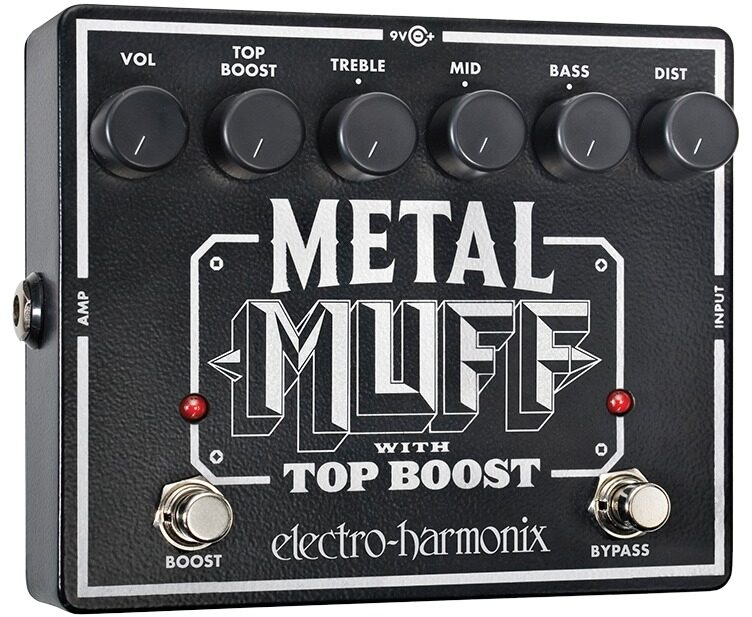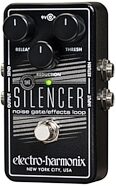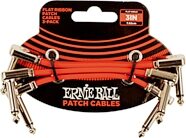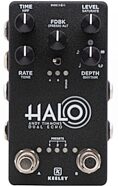Electro-Harmonix Metal Muff Distortion Pedal
No longer available at zZounds





Take the sound of the Big Muff up a notch with the Metal Muff distortion pedal. With 3-band EQ and footswitchable Top Boost, it's a headbanger's best friend.
Overview
Step up and stomp down on the Electro-Harmonix Metal Muff distortion pedal for some awesome metal-voiced distortion. This metal-infused Big Muff features three-band EQ, a boost switch for leads, a top boost for sharp and edgy output, volume, and distortion level controls. You'll have all bases covered regarding the tonal dimensions of your signal -- plus, both the bypass and boost switches have an easy-to-read engaged/disengaged light so you'll always know when your axe is fueled with crushing metal mayhem. Whether you're playing leads or rhythm, this pedal is a great companion for the stage or the recording studio.
Dan Miller demos the Metal Muff for Electro-Harmonix:
- One 1/4" instrument input
- One 1/4" output
- Boost and bypass foot switches
- Easy to see red indicator lights for bypass and boost switches
- Volume, top boost, bass, middle, treble, and distortion level controls
- Buffered bypass
- Powered via 9 volt battery or external power supply -- sold separately read less
Dan Miller demos the Metal Muff for Electro-Harmonix:
Electro-Harmonix Distortion: Mild to Wild
Electro-Harmonix is known for producing distortion pedals that pretty much run the gamut of dynamic and irresistible distortion. The Metal Muff distortion pedal follows the Big Muff, while adding the extra distorted push you're looking for. Turn up the volume, add in a little bass, and bring the distortion level all the way down to zero to get light distorted sound that responds well to your axe. Crank up the distortion to its maximum level, and you'll get what is essentially the shredder's dream.Shaping Your Sonic Signature
The control dials on your Metal Muff distortion pedal feature volume, top boost, bass, middle, treble, and distortion level controls. Three-band EQ controls give you plenty of room to shape the brightness, darkness, and midrange punch of… read more your signal. If that isn't enough, crank the top boost dial up if you want your sound to get a little more edgy to cut through the mix.Convenient Boost Switch for Licks and Leads
If you're in the middle of your set and you feel that you need an extra push, your Metal Muff distortion pedal utilizes a convenient boost switch on the bottom left corner. Both the bypass and boost switches feature an easy-to-see red light to let you know when each switch is engaged/disengaged.The Buffered Bypass Advantage
There can be a lot of hype around getting a pedal that uses a true-bypass configuration. Many guitarists don't realize that much of the unwanted noise that invades their signal can often be due to using excessively long instrument cables. A buffered bypass configuration takes care of this issue, so your signal won't lose any high-end frequency if you tend to use long cables during your set or recording session. Fire your guitar through this pedal, and let your axe and amplifier do the talking.Features:
- Metal-voiced distortion pedal with three-band EQ- One 1/4" instrument input
- One 1/4" output
- Boost and bypass foot switches
- Easy to see red indicator lights for bypass and boost switches
- Volume, top boost, bass, middle, treble, and distortion level controls
- Buffered bypass
- Powered via 9 volt battery or external power supply -- sold separately read less
Specs
* Knob controls include Distortion, Bass, Midrange, Treble, Top Boost and Output volume.
* The unique Top Boost knob allows you to dial in frequencies that center between 3.5 kHz and 4.3 kHz. Add to the edge of a solo or define a powerful rhythm with a single touch of the Metal Muff's dedicated Top Boost footswitch.
* The Bass has +14 dB of gain centered at 120 Hz; the Midrange has +15 dB of gain centered around 300 Hz; and the Treble has +10dB of gain centered around 1.2 kHz. Distortion has 10 dB of Gain while the output volume has a full +18dB of gain. All controls were designed to interact together for maximum cutting edge and a uniquely powerful distortion.
* Buffered Bypass.
* The Metal Muff provides an awesome array of alloys ranging from slithering mercury to molten slag, lead belly to blast furnace dross. Push your pedal to the METAL.
* The unique Top Boost knob allows you to dial in frequencies that center between 3.5 kHz and 4.3 kHz. Add to the edge of a solo or define a powerful rhythm with a single touch of the Metal Muff's dedicated Top Boost footswitch.
* The Bass has +14 dB of gain centered at 120 Hz; the Midrange has +15 dB of gain centered around 300 Hz; and the Treble has +10dB of gain centered around 1.2 kHz. Distortion has 10 dB of Gain while the output volume has a full +18dB of gain. All controls were designed to interact together for maximum cutting edge and a uniquely powerful distortion.
* Buffered Bypass.
* The Metal Muff provides an awesome array of alloys ranging from slithering mercury to molten slag, lead belly to blast furnace dross. Push your pedal to the METAL.
Electro-Harmonix's Description
Electro-Harmonix Metal Muff Distortion
Electro-Harmonix spent many months creating what we believe to be the best heavy metal pedal ever built. The Metal Muff utilizes 3 powerful EQ bands, including a midrange control designed for perfect contouring. Along with beautifully sculpted mids, the Metal Muff offers commanding bass and defined top end, coupled with user-controlled distortion from pinched-edge to totally crushing, making it a heavy metal gold mine.Reviews
Reviewers gave this product an overall rating of 5 out of 5 stars.
(34 ratings)
Submitted October 22, 2007 by a customer from gmail.com
"I've tried nearly all of 'em, and this is the best."
Verified Customer
zZounds has verified that this reviewer made a purchase from us.
Maybe a 10 here inflates scores, but I don't think so. Even taking into account the few critiques I've brought up, the positive aspects of this pedal are absolutely astounding, well beyond what its price would suggest. If this pedal were lost, I would replace it immediately.
This pedal takes care of my high gain needs. My amp has two gain channels, and they are now configured for a 70's hard rock sound (think Kansas) and an 80s "Heavy Metal" sound (Jake E. Lee, George Lynch, and bands like Judas Priest and Iron Maiden). The result is a great deal of tonal variety. My amp has a clean channel and two distinct gain channels, and with the Metal Muff it's like having a 5 channel amp: Clean, 70's Hard Rock, 80's "Heavy Metal," Metal Muff High Gain, and Metal Muff Top Boost Solo.
Sound
People pass out too many 10s. On the most objective analysis possible to something as inherently subjective as sound quality, it seems that most pedals ought to come in around a 5-7. Mathematical statisticians would bear me out on this point - as the number of samples increases, a frequency polygon tends towards the normal curve. THAT SAID, of all the many high gain pedals I've had the pleasure of trying (and there have been some real winners as well as losers), this is without a doubt the best. I have used the NYC Big Muff Pi and the Made-In-Russia black box Big Muff Pi from Electro Harmonix, and while they're probably the be-all, end-all of modern fuzz pedals, I… read more was worried that their characteristically loose and fizzy low end would ruin the prospects of high gain in the Metal Muff. Allow me to allay that fear! The Metal Muff has the tightest, most well-defined sound of any high gain pedal on the market. It competes with pedals costing twice to three times as much in its quality, and is worlds ahead of the likes of the Metal Zone and Metalcore by Boss (although the Keeley modded Metal Zone is a pedal on par with the Metal Muff - for twice the price). The Metal Muff has definition in droves. The EQ section is unique and specific, allowing you to tailor your sound exactly without losing either the character of your guitar or the character of the Metal Muff. The range of gain allows you to go anywhere from a surprisingly usable lower-gain sound (like a pinched, fat blues tone) to a monstrous roar at the upper limits. I find that the best place for my sound is between 12 and 3:00, with an overdrive pedal in front. This pedal responds very well to different overdrive pedals, and I get equally usable but very different results from running a TS808, a Matchless Hot Box, and an MXR Distortion+ in front of the Metal Muff. It is very amp-like in its responsiveness to other pedals feeding it. In fact, I've played on expensive amps that didn't sound this good.
Features
For a pedal to rank a 10 on features, it would have to outcompete all comers and really shine through. This pedal does not do that, but if you understand my unwillingness to artificially inflate this score you should get the point that the Metal Muff is by no means feature-starved. It has the essential complement of features - that is, "Volume," "Distortion," and an EQ section composed of "Bass," "Midrange," and "Treble." In addition to that, it can be run off of either batteries or a standard 9V adapter. My only real complaint about the pedal is that, like some other Electro Harmonix products, you have to have a screw driver to change the batteries. That is an absurd requirement. Now that we've seen the usual features and the one complaint, how about the real magic of this pedal? I'm talking, of course, about the foot-switchable "Top Boost" function, which also has its own adjustment knob. The "Top Boost" is an additional EQ/gain circuit on top of the rest of the pedal's function. It amplifies high frequencies of the guitar's signal (specifically, between 3500hz and 4500hz or thereabouts) depending on how you adjust the Top Boost knob. At Zero, you get no change from the regular pedal sound when you hit the switch, but turn it up and you rapidly get into "instant guitar solo" scream. I use two guitars, a Strat and an Explorer. My Strat has a JB Jr. in the bridge, and the Explorer has a GFS Crunchy Rails. Both of these pickups are hot, full, and bright, and as such I never turn the Top Boost knob above about 10-11. Getting it past 12 makes the sound screechy and unmanageable. For darker pickups, more might be needed. The Top Boost is a feature I wish every high gain pedal had; in fact, it makes the Metal Muff essentially a two-channel pedal, one for rhythm work and one for solos. I just wish that the pedal had a battery compartment so that it would be a quick change instead of a screwdriver ordeal.
Ease of Use
Why the lower rating, you ask? Well, it isn't that the pedal is difficult to understand. The manual, if you can call it that, is constituted of a single piece of yellow paper with writing on both sides, but you're not missing anything - it does a fine job explaining what everything does and how to use it. The low rating is because if you don't already pretty much know what tone you're looking for, you're going to have to spend some time working it out. The EQ controls are very mutually influential, and finding a good ratio of Treble to Top Boost is especially tricky because of how sensitively they react to one another. It is possible to get a really good Top Boost setting and then switch it off to find your rhythm tone is muddier than you like; similarly, you might dial in a great rhythm sound that sits perfectly in the mix, and then engage the top boost only to have it screech your ears off. A good rule of thumb is to get your rhythm/usual sound exactly like you want it FIRST, and then, starting at zero, adjust the Top Boost until it suits you. That is the simplest way to get the sound you want. If you find a different method works best for you, of course go with it.
Quality
Unlike the Big Muff Pi (Russian or American made) with their very thin - though not flimsy - casing, this pedal's container is made out of nice, thick aluminum. As is usual with Electro Harmonix products, the switches and jacks are very sturdy and should last as long as you have the pedal. The adjustment knobs are metal, and the pots are smooth and sturdy. No quality faults to speak of, and no corners cut.
Value
The price is competitive with other high gain pedals on the market, and the sound quality leaves 'em in the dust. What better measure of value is there than that? I don't want to give too high of a rating here because there are other Metal Muffs with the same fundamental sound for less money, but they lack the feature set of this one (for instance, the Nano Metal Muff only has Volume and Distortion with a three-position switch to adjust midrange scoop - talk about a lack of versatility, and without the Top Boost function I wouldn't even consider it).
Manufacturer Support
I can't give an opinion here because I haven't dealt with them.
The Wow Factor
This pedal looks good on a pedalboard, even if that isn't a very good reason to buy a pedal. It's not ridiculously huge like the Big Muff Pi, and its appearance is both "vintage" and "modern" - black case, white lettering, with a good blend of styles. It's not going to get you dates, but no other pedal would, either.
Musical Background:
Musician
Musical Style:
Everything from spacey cleans to roaring metal read less
Sound
People pass out too many 10s. On the most objective analysis possible to something as inherently subjective as sound quality, it seems that most pedals ought to come in around a 5-7. Mathematical statisticians would bear me out on this point - as the number of samples increases, a frequency polygon tends towards the normal curve. THAT SAID, of all the many high gain pedals I've had the pleasure of trying (and there have been some real winners as well as losers), this is without a doubt the best. I have used the NYC Big Muff Pi and the Made-In-Russia black box Big Muff Pi from Electro Harmonix, and while they're probably the be-all, end-all of modern fuzz pedals, I… read more was worried that their characteristically loose and fizzy low end would ruin the prospects of high gain in the Metal Muff. Allow me to allay that fear! The Metal Muff has the tightest, most well-defined sound of any high gain pedal on the market. It competes with pedals costing twice to three times as much in its quality, and is worlds ahead of the likes of the Metal Zone and Metalcore by Boss (although the Keeley modded Metal Zone is a pedal on par with the Metal Muff - for twice the price). The Metal Muff has definition in droves. The EQ section is unique and specific, allowing you to tailor your sound exactly without losing either the character of your guitar or the character of the Metal Muff. The range of gain allows you to go anywhere from a surprisingly usable lower-gain sound (like a pinched, fat blues tone) to a monstrous roar at the upper limits. I find that the best place for my sound is between 12 and 3:00, with an overdrive pedal in front. This pedal responds very well to different overdrive pedals, and I get equally usable but very different results from running a TS808, a Matchless Hot Box, and an MXR Distortion+ in front of the Metal Muff. It is very amp-like in its responsiveness to other pedals feeding it. In fact, I've played on expensive amps that didn't sound this good.
Features
For a pedal to rank a 10 on features, it would have to outcompete all comers and really shine through. This pedal does not do that, but if you understand my unwillingness to artificially inflate this score you should get the point that the Metal Muff is by no means feature-starved. It has the essential complement of features - that is, "Volume," "Distortion," and an EQ section composed of "Bass," "Midrange," and "Treble." In addition to that, it can be run off of either batteries or a standard 9V adapter. My only real complaint about the pedal is that, like some other Electro Harmonix products, you have to have a screw driver to change the batteries. That is an absurd requirement. Now that we've seen the usual features and the one complaint, how about the real magic of this pedal? I'm talking, of course, about the foot-switchable "Top Boost" function, which also has its own adjustment knob. The "Top Boost" is an additional EQ/gain circuit on top of the rest of the pedal's function. It amplifies high frequencies of the guitar's signal (specifically, between 3500hz and 4500hz or thereabouts) depending on how you adjust the Top Boost knob. At Zero, you get no change from the regular pedal sound when you hit the switch, but turn it up and you rapidly get into "instant guitar solo" scream. I use two guitars, a Strat and an Explorer. My Strat has a JB Jr. in the bridge, and the Explorer has a GFS Crunchy Rails. Both of these pickups are hot, full, and bright, and as such I never turn the Top Boost knob above about 10-11. Getting it past 12 makes the sound screechy and unmanageable. For darker pickups, more might be needed. The Top Boost is a feature I wish every high gain pedal had; in fact, it makes the Metal Muff essentially a two-channel pedal, one for rhythm work and one for solos. I just wish that the pedal had a battery compartment so that it would be a quick change instead of a screwdriver ordeal.
Ease of Use
Why the lower rating, you ask? Well, it isn't that the pedal is difficult to understand. The manual, if you can call it that, is constituted of a single piece of yellow paper with writing on both sides, but you're not missing anything - it does a fine job explaining what everything does and how to use it. The low rating is because if you don't already pretty much know what tone you're looking for, you're going to have to spend some time working it out. The EQ controls are very mutually influential, and finding a good ratio of Treble to Top Boost is especially tricky because of how sensitively they react to one another. It is possible to get a really good Top Boost setting and then switch it off to find your rhythm tone is muddier than you like; similarly, you might dial in a great rhythm sound that sits perfectly in the mix, and then engage the top boost only to have it screech your ears off. A good rule of thumb is to get your rhythm/usual sound exactly like you want it FIRST, and then, starting at zero, adjust the Top Boost until it suits you. That is the simplest way to get the sound you want. If you find a different method works best for you, of course go with it.
Quality
Unlike the Big Muff Pi (Russian or American made) with their very thin - though not flimsy - casing, this pedal's container is made out of nice, thick aluminum. As is usual with Electro Harmonix products, the switches and jacks are very sturdy and should last as long as you have the pedal. The adjustment knobs are metal, and the pots are smooth and sturdy. No quality faults to speak of, and no corners cut.
Value
The price is competitive with other high gain pedals on the market, and the sound quality leaves 'em in the dust. What better measure of value is there than that? I don't want to give too high of a rating here because there are other Metal Muffs with the same fundamental sound for less money, but they lack the feature set of this one (for instance, the Nano Metal Muff only has Volume and Distortion with a three-position switch to adjust midrange scoop - talk about a lack of versatility, and without the Top Boost function I wouldn't even consider it).
Manufacturer Support
I can't give an opinion here because I haven't dealt with them.
The Wow Factor
This pedal looks good on a pedalboard, even if that isn't a very good reason to buy a pedal. It's not ridiculously huge like the Big Muff Pi, and its appearance is both "vintage" and "modern" - black case, white lettering, with a good blend of styles. It's not going to get you dates, but no other pedal would, either.
Musical Background:
Musician
Musical Style:
Everything from spacey cleans to roaring metal read less
50 of 52 people (96%) people found this review helpful. Did you?
Thanks for your opinion!
No longer available at zZounds
In most cases, a product is unavailable because it has been discontinued by the manufacturer
This is a carousel with product cards. Use the previous and next buttons to navigate.











